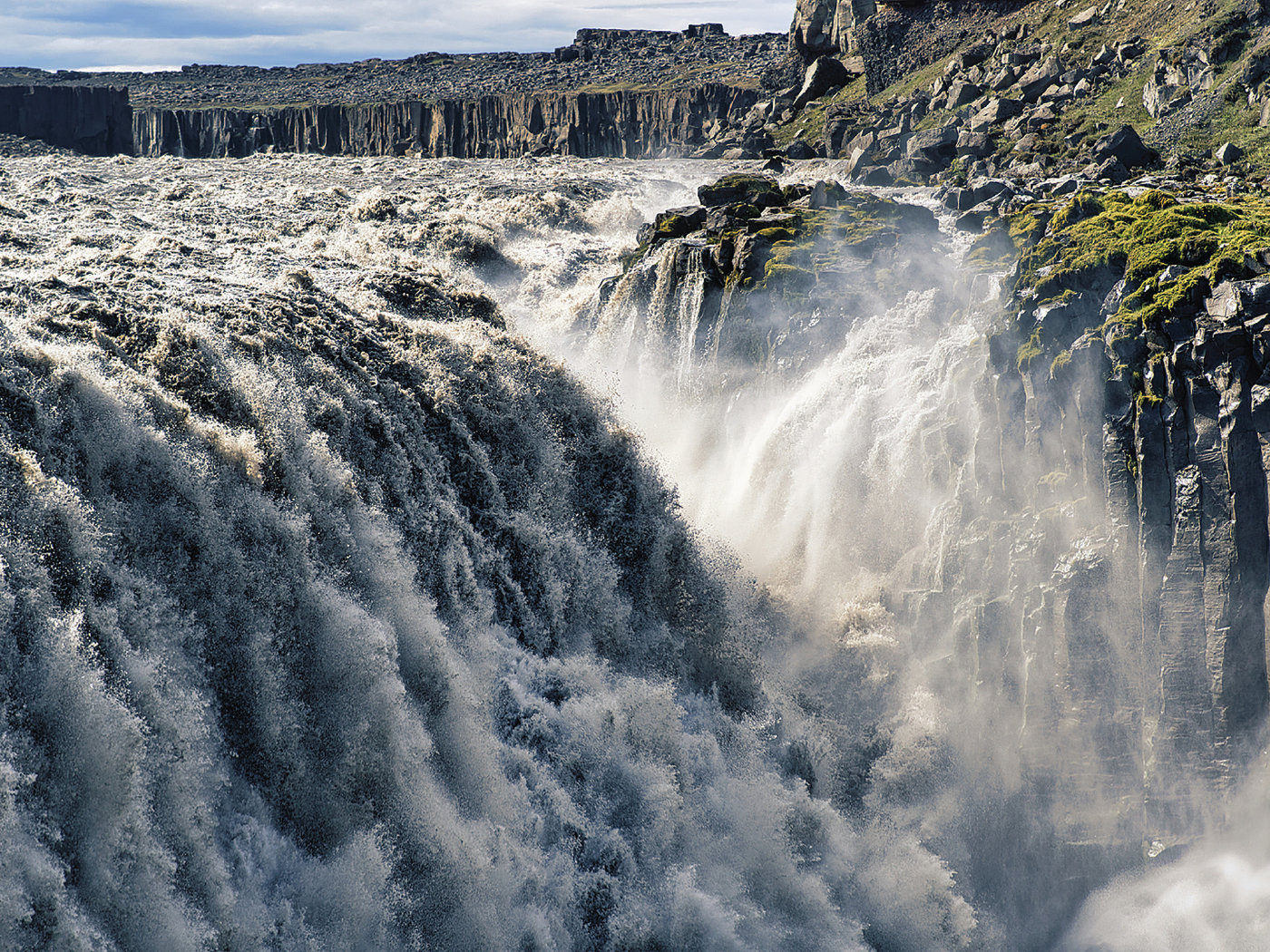Science, Biblical and anti-Biblical, recognizes that there was a period of time in the distant past when the earth was barren. How long ago and how long it lasted is a matter of conjecture ... unless one accepts the Biblical record. But out in California, almost as far west as one can go, there stand beautiful monuments to the past —the redwoods: monuments that were seedlings when Noah was laid to rest; saplings when the tower of Babylon was deserted; stalwart young giants when David downed his giant. And when the tree on which Christ was hung lost its life, there on the shores and mountain sides of California, those same redwoods were "lifting leafy arms to pray." They still stand there, those California redwoods, Sequoia sempervirens and Sequoiadendron giganteum.
The life story of the giant sequoia, the older of the two California redwoods, poses a number of fascinating questions that science has heretofore been unable to answer. Not the least of these are: 1) Exactly how old are they? 2) Why don't we find living specimens much older than approximately 3200-plus years? 3) Why are they limited to the mountains of California?
When we examine the writings of eminent dendrochronologists, we find that the life span of the giant sequoia is over 3200 years ... with many authorities estimating its age much greater. Richard J. Hartesveldt says, "At this writing," (1975) "3200 years of age is the oldest count on record. The stump count was made by A.E. Douglass, the well known dendrochronologist, before 1920. Some hold to much older figures for the greatest age, and a recent author claims one specimen to be 6000 years old."1 In a previous paragraph he had said, "Schmeckbier (1912) states that sequoias never fail to add an annual ring, a statement later refuted by Gillette (1930) who found missing rings in a large specimen.
Nevertheless, age dating by ring count remains more accurate than any other method known for the giant sequoia."2 In addition to the ancient bristlecone pine, we may say that the giant sequoia, found only in the Sierra Nevadas of California, IS ONE OF THE OLDEST LIVING THINGS ON EARTH!
The longevity of the giant sequoia is attributed to several factors: it is very resistant to insects, disease and fire. E.F. Clements in a pamphlet, "California Redwoods," said, " … scars show evidence of ancient forest fires, yet the trees grew to maturity."3 Its resistance to fire is due to several factors: the bark is "massively thick, greater than any tree on earth, 24-31" thick" 4, a poor conductor of heat, asbestos-like, and contains small amounts of resin. The wood is also of a soft and sponge-like quality which absorbs water easily.
"Trees," said Asa Gray in his famous essay on the Longevity of Trees, "far outlast all living things. They never die of old age, but only from injury or disease, or, in a word, from accidents. If not destroyed by accident, that is, by extrinsic causes—they do not eventually perish, like ourselves, from old age. It is commonly thought that they are fully exposed to the inevitable fate of all living things…. But the tree is an aggregate of many individuals united in a common trunk and why should not the aggregate, the tree, last indefinitely?" 5
If there is nothing "extrinsic" that can destroy trees and, if the giant sequoia is extremely resistant to insects, disease and fire, why are there no giant sequoias much older than 3200-plus years (using the most authentic and conservative age)? We know from the fossils that they existed long before that ... during the period when "pre-historic" animals also lived. "The pick of the fossil hunter has unearthed fossil remains of sequoia leaves and cones in strata as early as the Triassic. This period represents the morning of reptilian life.... Hence, the sequoia as a race has a claim to almost fabulous antiquity." 6 What could have happened 3200-plus years ago that can account for the discontinuance of the giant sequoia? Listen to one evolutionist's version: " … few of the dramas of the earth which science has restored are more wonderful than the restriction of the sequoia exclusively to the mountains of California. The record of the rocks following the great Age of Reptiles tells quite a different story. With amazing abruptness, all the rich diversity of reptilian life apparently ceased…. A feature so extraordinary seems to demand an unusual explanation. Causes of a violent cataclysmic nature are advanced as valid interpretations. Yet science refuses to take cognizance of universal calamities and considers them as apocryphal because they are too unnatural."7 There we have it. Thousands of years ago " … the sequoia was one of the chief garments of the earth's vegetation during Miocene times. Its forests must have been the most imposing the earth has ever known…. Under the lava flows of Mt. Shasta imprints of its leaves and cones are found. This is indubitable evidence that the sequoia existed in California at that time."8 Then "a terrible solitude was the lord of this universe." 9 And, for a time the three common species of redwood ceased to grow as extensively as before. Why? Is it possible a universal calamity" actually occurred? Perhaps an understanding of the reproduction and growth habits of the giant sequoia can tell us something that would throw light on this mystery.
According to Ellsworth, the giant sequoia reproduces by seed only. These are contained in small, egg-size cones with 30-40 closely packed, woody, persistent scales; the cones mature in two years. The seeds, 30-plus in each cone, are the size of an oat seed with membranous disk-like wings. The cones remain green and closed until dried and open, and may remain attached to the tree in a green, growing condition for 21 years. They do not disseminate the seeds while on the tree. Even severely damaged trees continue to produce cones. In order to germinate, the seed must be buried in moist mineral soil in such places as rocky ledges, steep hillsides and in crevices, with little nutrient needed. There must, however, be open sunlight. The following discovery is most pertinent to our study: seeds have been known to be carried by flood. "Perhaps the best known and most classical grove extension is along the South Fork of the Kaweah River below Garfield Grove. A dozen sequoias line the river bank…. The altitude is the lowest known in the world for a naturally seeded giant sequoia. An increment boring indicates that this tree was seeded in the middle 1880s, when a torrential flood also floated huge Sequoia logs through the town of Visalia some 40 miles to the west of San Joaquin Valley." 10
The young seedling puts down a tap root four to five inches long which may penetrate to 10-15 inches at one year. "At the sapling stage, the root system has spread out laterally and the taproot is gone." On mature trees, the root system may spread out as much as 125 feet from the tree, although the average radius is 40-50 feet. "The shallow depth of the roots of so large a tree surprises nearly all park visitors. How do such trees remain standing without a deeper anchoring root system? ... The trees, it seems, would need to be well balanced to maintain their equilibrium. ... But the number of leaners is surprising." 11 The root system is not only shallow ... the roots soak up moisture like sponges, according to John Muir.
-
In summary we find:
-
For some unknown reason, giant sequoias can only be traced back 3200-plus years with specimens in the recent record. Yet this species is found plentifully in the fossil record over a great deal of the earth's surface.
-
Their disappearance is not likely to have been because of disease, insect infestation or fire, inasmuch as they are very resistant to these. (Note: a fire great enough to totally destroy the trees would also have been sufficient to have destroyed their seeds, as well, it would seem.) Another catastrophe that could account for the sudden discontinuation of trees and dinosaurs ... and pterodactyls ... and men ... is a powerful flood.
-
The history of a giant sequoia seed from cone to sapling shows that:
- The cones could have survived flooding up to 21 years—the Noahic flood lasted only 371-376 days.
- Flooding has been shown to have been instrumental in disseminating seeds. The worldwide Noahic flood eventually receded, finally approximating the conditions of a local flood.
-
The development of the young tree utilizes shallow alluvium for germination, putting down a temporary tap root until a shallow but wide-spread root system can develop. This would make development of the mature tree easier in post-flood conditions.
-
Although capable of living indefinitely, the greatest age of the giant sequoia is somewhere near 4000 years old, making its reappearance on the earth about 2000 B.C.— just at the time the greatest historical authority, the Bible, puts it.
In conclusion, it would seem that the history and growing habits of the living giant sequoia fit well with the story of the flood, thus:
| FLOOD | GIANT SEQUOIA |
| 1. Destroyed every living thing | 1. Widespread discovery of fossils pre 2000 B.C. |
| 2. Lasted approximately one year | 2. Cones may remain on a tree for as long as 21 years |
| 3. Receded, leaving alluvial soil and other conditions suitable for seed germination | 3. Seeds need just the kind of soil the flood left |
| 4. There were, no doubt, crevices and hillsides with shallow soil deposits | 4. Sequoias grow mostly on granite-based residual and alluvial soil, on metamorphosed basalt, on soil derived from schistose rock |
| 5. As the Noahic flood receded, it would have sown seeds just as happened in the 1880s | 5. The Kaweah River area and along the tributary of Rattlesnake Creek show flood dispersals |
| 6. Occurred about 2000 B.C. | 6. Began growing about 4000 years ago |
Has God given us in the giant sequoia a timepiece by which we may estimate when the flood occurred? What might we discover through a more thorough investigation into the history of the giant sequoia of the Sierra Nevadas? Speaking of another kind of tree, our God once said, "Hast thou not heard how I made it long ago and formed it of ancient times?" (II Kings 19:25)
REFERENCES
1. Richard J. Hartesveldt, joint author, The Giant Sequoia of the Sierra Nevadas, Washington, D.C., 20240, The National Park Service, 1975, p. 58. Many authorities believe that some bristlecone pines are somewhat older than the oldest sequoias.
2. Ibid.
3. E.F. Clements, California Redwoods, 85 Bluxome St., San Francisco, California, A Mike Roberts Color Production, Berkeley, California, 94710, © 1972.
4. Hartesveldt, p. 40.
5. Asa Gray, Longeuity of Trees, quoted in Rodney Sydes Ellsworth, The Giant Sequoia, pp. 94-95; American Journal of Science, 2nd series, vol. 17, 1846-1870, reprint 1857 (pp. 440-443).
6. Ellsworth, p. 16. 9. Ellsworth, p. 21. 7. Ellsworth, pp. 16-19. 10. Hartesveldt, p. 75.
8. Ellsworth, loc. cit. 11. Ellsworth, pp. 40-43.
*Mrs. Robbins lives in Redding, California, and is a successful free-lance writer.



















